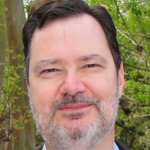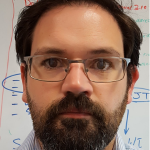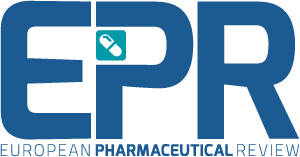Enhancing manufacturing with process analytical technology (PAT) in 2025
Supported by:
17 April 2025
Shares
- Like
- Digg
- Del
- Tumblr
- VKontakte
- Buffer
- Love This
- Odnoklassniki
- Meneame
- Blogger
- Amazon
- Yahoo Mail
- Gmail
- AOL
- Newsvine
- HackerNews
- Evernote
- MySpace
- Mail.ru
- Viadeo
- Line
- Comments
- Yummly
- SMS
- Viber
- Telegram
- Subscribe
- Skype
- Facebook Messenger
- Kakao
- LiveJournal
- Yammer
- Edgar
- Fintel
- Mix
- Instapaper
- Copy Link
During this virtual panel, industry experts will explore the latest developments and biggest challenges in process analytical technology (PAT) today.
In the pharmaceutical industry, PAT can help enhance process understanding as well as product quality.
PAT tools utilising techniques such as spectroscopy and chromatography, Nuclear Magnetic Resonance (NMR), applied inline, online and at-line, are beneficial for monitoring and controlling critical parameters during manufacturing. For instance, PAT is valuable asset in QbD-based manufacturing.
Spectroscopic methods like near infrared (NIR), Raman and Fourier transform infrared (FTIR) spectroscopy offer advantages in pharmaceutical manufacturing, for example, as sample collection or manipulation is not necessary. NMR for example is crucial for determining molecular structures and identifying drug metabolites. Yet key challenges are still present despite major progress over the last ten years, preventing regular implementation of this technology.
Hear speakers share their own experience on best practice when incorporating PAT to aid pharmaceutical processes. The session will cover applications of the technology, innovative PAT tools, as well as addressing obstacles to its broader adoption in the pharmaceutical industry.
Key learning points:
- Find out how PAT is being applied in pharmaceutical manufacturing in 2025
- How PAT can enhance manufacturing, lower costs and optimise product quality
- Using spectroscopic tools, including NMR, to monitor critical quality attributes (CQA)
- The latest developments in PAT and its future potential in the pharmaceutical industry
Interested? Register to watch on demand >>>
This webinar is sponsored by:




OUR SPEAKER


Yang Liu, Ph.D. – Senior Scientist II, Scientific Liaison in General Chapters USP
Dr Yang Liu is a Scientific Liaison for General Chapters at the United States Pharmacopeia (USP). Currently, Dr Liu is responsible for USP General Chapters development, including the spectroscopy technologies (such as UV, NIR, Raman, and NMR), process analytical technologies, and digital products. He previously served as the Manager of Product Quality and Analytical Methods in the Digital and Innovation division at USP. He has been a guest scientist at the National Institute of Standards and Technology (NIST) and an invited expert in the ISO Working Group (ISO/TC 34, WG 24). He graduated from the College of Pharmacy at the University of Illinois at Chicago.


Carrie Mason – Head of the Process Innovation Center, Lonza Biologics R&D
Carrie Mason heads a multidisciplinary centre of excellence responsible for the identification, development and roll out of Process Analytical Technologies with associated automation. She has over 27 years of industrial experience with expertise in purification development, analytical methodologies, and is currently building knowledge of bioreactor operations. Carrie is a participant in BioPhorum and the BioInnovation Group and has a passion for the general advancement of innovation in biomanufacturing as well as inspiring the next generations of scientists


Prof. Geoff Smith – Professor of Pharmaceutical Process Analytical Technology, De Montfort University
Prof. Geoff Smith graduated in Pharmacy from the University of Bath in 1985 and obtained his PhD from the University of Brighton in 1991, focusing on cryoprotectants’ mechanisms of action. This sparked his interest in the dielectric properties of materials. He joined De Montfort University in 1993, where his research shifted to broadband dielectric measurements. Recently, his work has focused on Process Analytical Technology (PAT) for pharmaceutical process development and manufacturing controls. His research group applies impedance, dielectric, and terahertz spectroscopy alongside optical techniques to analyse material properties across a wide range of scales. Smith developed through-vial impedance spectroscopy (LyoDEA) for monitoring phase behaviour, temperatures, and drying profiles in collaboration with GEA Pharma Systems and AstraZeneca, funded by the Technology Strategy Board. Since 2007, he has expanded the Pharmaceutical Technologies group at De Montfort University, focusing on current pharmaceutical industry challenges.


Prof. Richard Willson – Professor of chemical and biomolecular engineering, University of Houston
Prof. Richard Willson is recognised for his work on the development of purification, detection, and measurement technologies for pharmaceutical manufacturing, process control, and medical diagnostics. He earned his B.S. and M.S. degrees in chemical engineering from Caltech in 1981 and 1982, respectively, and completed his PhD at the Massachusetts Institute of Technology in 1998 under Charles L. Cooley and Richard C. Reid. Since 2008, he has been an Affiliate in the Quantitative and Computational Biology Program at Baylor College of Medicine and, since 2007, a Senior Affiliate Member in the Cancer program at the Houston Methodist Research Institute.


Pól MacFhionnghaile – Materials scientist at Thermo Fisher Scientific
I started my journey in pharmaceutical research over the course 15 years gaining a PhD. In chemistry from the National University of Ireland, Galway though the Solid-State Pharmaceutical research cluster. I have worked as post-doctoral researcher in the centre of Continuous Manufacturing and Crystallisation (CMAC) in the university of Strathclyde and NUI, Galway. Within this time in academia, I have worked closely with solid-state and process analytical techniques to better understand a processes nucleation, crystal growth, aging and reactions.
I have worked as an analytical scientist in APC Ltd, Dublin and currently as a materials scientist in Thermo Fisher Scientific, Cork, both roles focused my interests in developing methods for reactions and crystallisation analysis for process optimisation. Throughout my career I have coupled multivariate data analysis to best deconvolute information from the collected data.
PAT methods I’m most familiar with include process Raman, IR, UV-vis, and NIR spectroscopy, as well as in-situ microscopy (PVM and Blaze Metrics) and cord length measurement techniques (FBRM, Blaze Metrics).
FAQs
FAQs
Is the panel discussion free?
Yes – there is no charge to watch the panel discussion, either live or on-demand.
How long will the panel discussion be?
This panel discussion will last up to an hour.
What do I need to watch this panel discussion?
All you need is a computer with an internet connection. We recommend using headphones if possible if you’re in an office environment.




